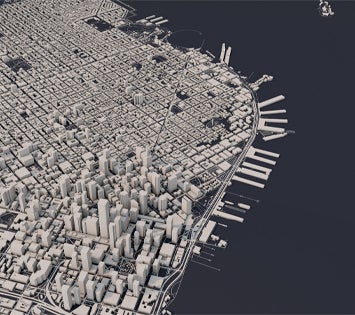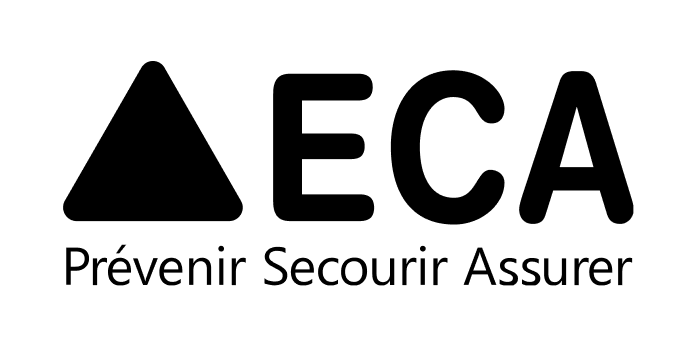The Goal
The California Earthquake Authority (CEA) is one of the world’s largest providers of residential earthquake insurance representing over one million policyholders and with a claims-paying ability of about $19 billion. The organization is committed to mitigating earthquake risk and reducing the protection gap which exists in California, where take-up of residential properties is approximately 10%.
The Earthquake Brace and Bolt Program is an initiative which helps CEA policyholders reduce the potential for earthquake damage, offering a grant of up to $3,000 toward a seismic retrofit for qualifying houses. The program incentivizes homeowners to mitigate their earthquake risk and creates a more resilient marketplace for the management of earthquake risk. For the reinsurance marketplace, the Brace and Bolt program helps reduce the aggregate risk of their portfolio, enabling better pricing for ceding risk.
The Objective
Demonstrating the Efficacy of Brace and Bolt Retrofits
CEA is at the forefront of scientific research into the seismic performance of buildings. It commissioned a multi-year, multidisciplinary project, coordinated by the Pacific Earthquake Engineering Research (PEER) Center, to generate the latest scientific data on the impact of bracing and bolting on properties built pre-1970 and to assess the corresponding potential insurance-related credits and penalties based on different property characteristics and foundations.
A select number of catastrophe risk modelers were invited to participate in the study to evaluate the impact of brace and bolt using PEER’s latest scientific developments. Moody’s RMS™ has been recognized as a market leader in the field of earthquake risk, and has previously partnered with CEA on numerous initiatives. Its models reflected the latest view of national seismic hazard based on the USGS (2014). The team was tasked with quantifying the extent to which retrofitting measures can help reduce losses for vulnerable properties in California.
The Solution
Version 17 of the Moody’s RMS North America Earthquake (NAEQv17) model was used for the study. Our NAEQv17 provides the most comprehensive event set available delivering a high-fidelity representation of the USGS seismic hazard data. This version includes high resolution geotechnical data, detailed basin modeling, and Next Generation Attenuation West Version 2 (NGA-W2) ground motion modeling. The model delivers improved vulnerability modeling capabilities such as modeling for very tall buildings and complex specialty lines, and enhanced capability to model higher and lower representations of vulnerability and of ground motions. As part of our study to understand the impact of retrofit on losses, Moody’s RMS incorporated the latest PEER vulnerability functions representing a range of building variants, each of which are on foundations that are either retrofitted or unretrofitted. The analysis examined the impact of foundation retrofit on losses.
The Process
Data Import, Recalibration and Analysis - The analysis was performed by our Earthquake Model Development team based on a set of 48 different building variants developed by PEER as part of a previous CEA-funded project to understand the seismic performance of wood-framed houses in California.
These building variants represented eight combinations of superstructure characteristics – including age, number of stories and exterior finish – and six foundation characteristics including retrofitted and non-retrofitted cripple and stem walls. These characteristics were common to the four test locations for the project – San Francisco, Northridge, San Bernardino, and Bakersfield.
The Moody’s RMS team imported the suite of PEER vulnerability functions into RiskLink to assess average annual loss (AAL), occurrence exceedance probability (OEP) and historical footprint analysis via Moody's RMS NAEQ17. To accurately represent the woodframed housing stock based on the PEER variations, they created exposure weighted composite functions unique to the four test cities, which could be used to evaluate the impact of bracing and bolting on AAL and ground-up 250-year return period losses.
The team compared the performance of the PEER functions against Northridge claims data, and also compared the modeled to insured losses with these PEER functions against the same analyses using USGS (Wesson et al., 2004) and HAZUS (Kircher, 2018) functions, calibrating the functions to achieve alignment with the claims and damage statistics from California earthquake events. The analysis of the impact of bracing and bolting and the corresponding potential insurance rate credits and penalties for the different foundation types and conditions was carried out using both the original and recalibrated PEER functions. Moody’s RMS also tested for suitability in estimating portfolio-level losses.
Quantification of Credits for Bracing and Bolting - Using our NAEQv17 models, the team provided scientific evidence of the impact of retrofitting properties built pre-1970 in four test locations in California across a variety of building types and foundations and to measure the change in AAL and in the 250-year return period.
Moody’s RMS was able to determine hypothetical credits and penalties based on a series of scale factors developed by the team using vulnerability functions developed by PEER to characterize the seismic performance of wood frame houses. These could be applied to a baseline ground up AAL for a given vintage, location, number of stories or exterior finish.
The Moody’s RMS loss analysis for the CEA/PEER project provided important information about the reduction of earthquake damage to houses that have a code compliant crawlspace retrofit. This information is currently being included in our mitigation outreach to provide homeowners with an understanding of the physical and financial protection provided by seismic retrofitting. The analysis results make our mitigation outreach efforts more meaningful to California homeowners.
Janiele Maffei, CEA,
Chief Mitigation Officer
The Outcome
The Moody’s RMS analysis:
- The reduction in average annual losses for retrofitting wood siding homes on cripple walls was as high as 70%, much larger than for retrofitting those same homes on stem walls where loss reductions were as high as 35%.
- Retrofitting has a smaller impact on the losses sustained by houses with stucco.
- The trends and relative impacts are similar when using ground-up AAL and ground up 250-year return period losses.
- Bracing and bolting was effective in reducing earthquake risk regardless of location.
As of May 25, 2022, the Earthquake Brace and Bolt Program has provided grants to over 20,000 homeowners who successfully completed a code-compliant retrofit of their crawlspace as part of the Brace and Bolt Program. The analytical insights produced by Moody's RMS have demonstrated to the CEA that clearly defined credits for earthquake insurance based on different forms of retrofitting can be developed for the California residential market. This can help to boost the adoption of the Earthquake Brace and Bolt Program and in turn help reduce the protection gap which exists in the sector.
Moody’s RMS continues to work with CEA and its stakeholders and will analyze the impact of any future research conducted by the CEA as part of the Brace and Bolt Program or any USGS hazard updates to our North America Earthquake model.
To learn more about the partnership, read the case study, Quantifying the Impact of Home Retrofit in California: Supporting the Case for Earthquake Retrofit Credits for California Homes.

© 2023 Risk Management Solutions, Inc. and/or its affiliates and licensors (“Moody’s RMS”). All rights reserved. All names, logos, and icons identifying Moody’s RMS and/or its products and services are trademarks of Risk Management Solutions, Inc. and/or its licensors or affiliates. Third-party trademarks referenced herein are the property of their respective owners.
Risk Management Solutions, Inc. is a subsidiary of Moody’s Corporation (NYSE: MCO) and operates as part of the Moody’s Analytics business segment. Moody’s Analytics is operationally and legally separate from the Moody’s Investors Service credit rating agency.

California Earthquake Authority (CEA) is one of the world’s largest providers of residential earthquake insurance, with more than 1 million California households placing their confidence in us. Backed by the expertise of 25 participating insurance companies and about $19 billion in claim-paying capacity, CEA is earthquake strong and earthquake ready.










